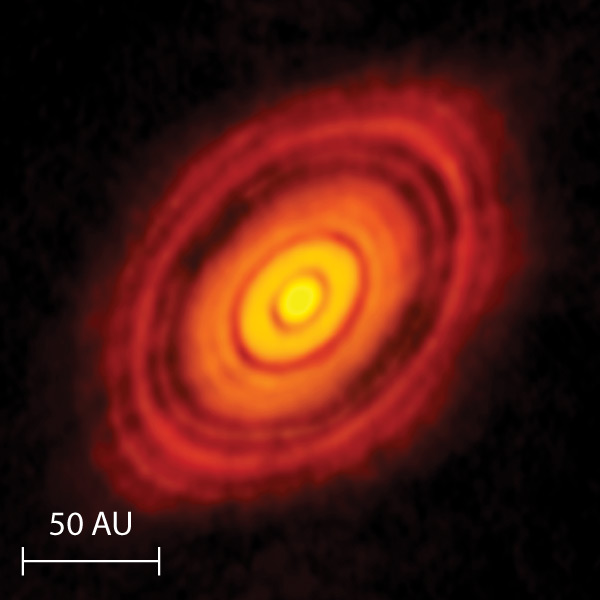Is there a reason for FOUR rocky planets and FOUR hydrogen-rich planets?
It might seem like there should be some reason for the fact that our solar system ended up with exactly four rocky and four hydrogen-rich planets. However, there probably isn’t, although there does appear to be a reason why the total number of planets should be fairly small.
The reason has to do with gravity. As the particles that made the planets grew in size, gravity created a reinforcing feedback in which the larger a particle grew, the stronger its gravity became. This in turn gave it even stronger gravity, allowing it to grow even larger. This process meant that the largest particles eventually “swept up” nearly all the small particles that were available to them along their orbital paths.
This “sweeping up” process guaranteed that the total number of planets would be small, because there was room in the disk for only a relatively small number of such paths. You can actually see this idea in action in the image below: The gaps in the disk are thought to be paths along which planets have already swept up most of the material (the planets themselves are too small to show up in the image). However, observations of other solar systems also tell us that the final number of planets can vary.
In summary, the fact that our solar system has a relatively small total number of planets is a consequence of the way in which planets form through gravity. However, it is almost certainly coincidental that our solar system ended up with exactly four each of rocky and hydrogen-rich planets.
Note: It’s even possible that our solar system still has an undiscovered “Planet 9” that orbits far beyond Neptune. This possibility arises from careful study of the orbits of distant comets, which show patterns that some scientists think might be explained by the gravitational tug of an unseen planet with at least five times the mass of Earth. A telescopic search for this possible planet is underway, so we should know within a few years whether it actually exists. If it does, it is likely to be either ice-rich or hydrogen-rich in composition.
